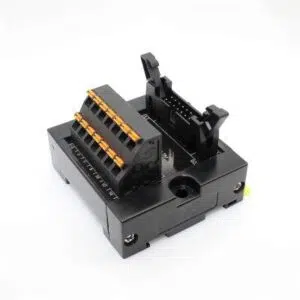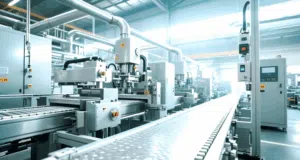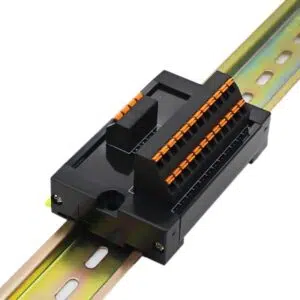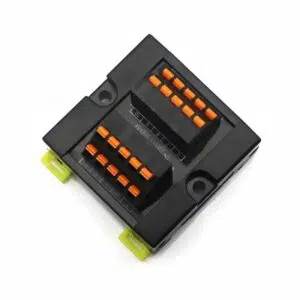DIN rail junction box is an essential component in modern automation systems, offering a compact and organized solution for electrical connections. Widely used across industries, these enclosures streamline wiring, enhance safety, and simplify maintenance in control panels and machinery.
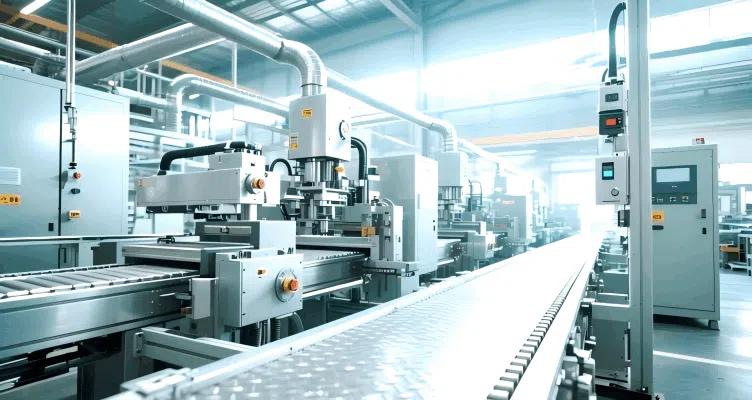
Their standardized design ensures compatibility with DIN rail-mounted devices like PLCs and wire distribution blocks, making them ideal for industrial automation systems. By protecting connections from dust, moisture, and mechanical stress, these junction boxes improve system reliability while reducing installation time.
Part 1 What are DIN Rail Junction Boxes?
Understand Definition and Function
Din rail terminal junction box is a modular enclosure that organizes and protects electrical connections in control systems. Mounted on standard DIN rails, they securely house terminal blocks, relays, and other components while preventing dust, moisture, and short-circuit risks. Their compact, standardized design simplifies wiring and maintenance in industrial automation, energy distribution, and machinery control applications.
Overview of Their Key Features and Components
Wiring connection boxes are essential enclosures designed for organizing and protecting electrical connections in industrial and commercial applications. The following chart shows several key features of these boxes to help you deeply understand this component.
| Feature | Description | Functions |
| Material | polycarbonate (PC) / ABS | Impact resistance Thermal stability Protection against dust and moisture |
| sizes | a.Different standard widths b.Various lengths(eg.50mm-300mm) and heights |
Match DIN rail dimensions (e.g., 35mm/15mm), and accommodate terminal blocks, relays, or PLCs. |
| Mounting | Snap-on / screw-fix mechanisms | Tool-free mounting / secure mounting |
These features make DIN rail junction box a versatile and reliable solution for efficient electrical system management.
Two Standard Types of Modular Terminal Junction Box
The two main types of wiring distribution blocks are plastic and metal. Plastic junction boxes are commonly used in indoor settings where protection against electromagnetic interference (EMI) is not a significant concern. They are economical and ideal for general-purpose applications. Metal junction boxes, however, offer superior protection against EMI and are ideal for outdoor or industrial environments.
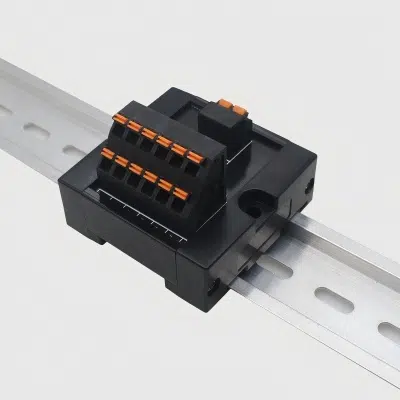
Part 2 Key Benefits of Using DIN rail terminal junction module in Automation
DIN rail terminal junction modules offer significant advantages in automation systems by combining space efficiency, user-friendly design, and reliable performance.
Their compact, standardized form factor allows for high-density wiring in control panels, optimizing valuable cabinet space while maintaining an organized layout. The module like HM02-12M simplifies both installation and maintenance through tool-free connections, enabling quick wiring adjustments and effortless component replacements to minimize system downtime.
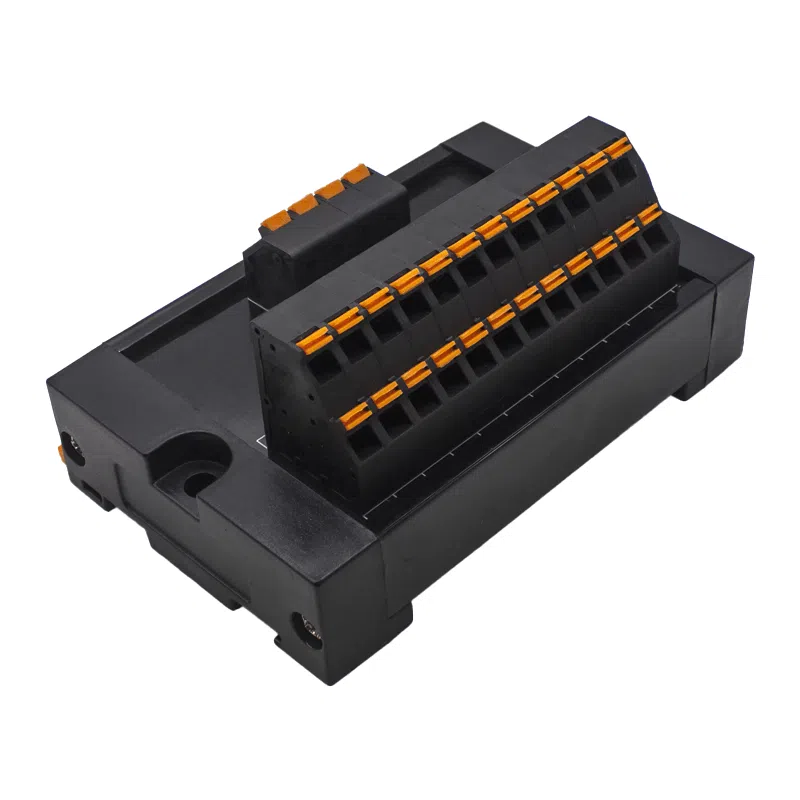
Model Number: HM02-12M
- Plastic material: PA66 UL94V-0
- Size (L*W*Hmm):85*55*42mm
- Certification: UL,CE,ROSH,CQC,TUV
- Wire range: 24-12AWG
- Max soldering: -40℃~±105℃/5Sec
Additionally, they enhance safety and durability with flame-retardant housings and robust terminals designed to withstand vibrations, corrosion, and harsh industrial environments. By securely mounting on DIN rails, these modules ensure stable long-term operation, making them an ideal solution for scalable and maintenance-friendly automation setups.
Part 3 Top Applications of Din Rail Junction Box in Industrial Automation
DIN rail junction boxes play a vital role in industrial automation by providing organized, secure, and efficient electrical connectivity. There are several main applications of these modules in automation systems.
Control Panels
They provide essential centralized housing for control panel components, protecting terminal blocks, relays, and circuit breakers in automated machinery. Their compact design allows for organized wiring while shielding sensitive electronics from dust, moisture, and electrical interference.
Automation Systems
In robotic arms and production lines, DIN rail terminal junction modules maintain clean wiring layouts, reducing signal interference and enabling quick troubleshooting. Like the product HM02-24M, its organized approach minimizes downtime during system upgrades or repairs.
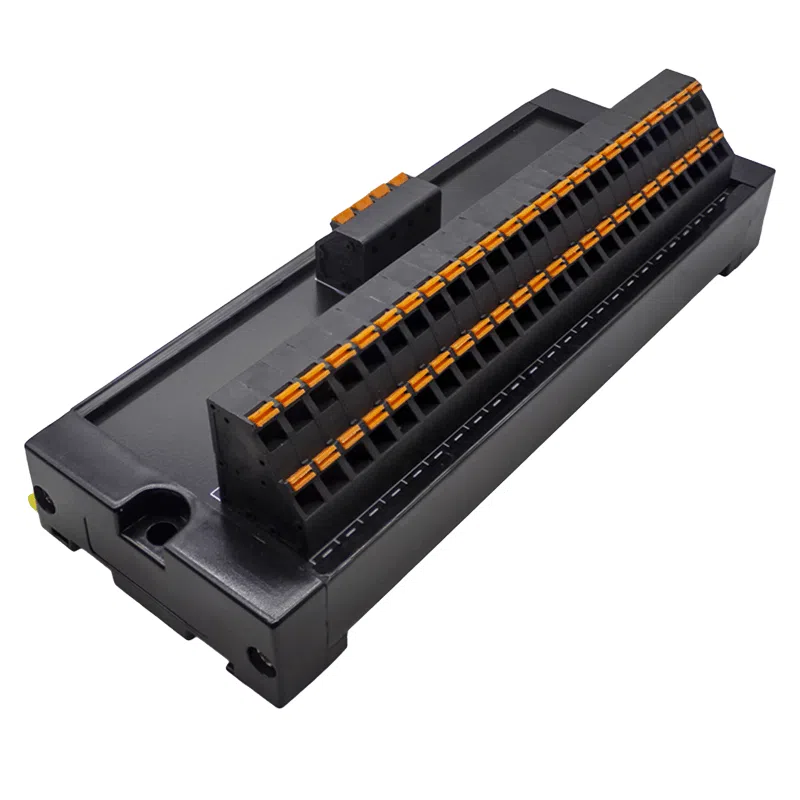
Model Number: HM02-24M
- Plastic material: PA66 UL94V-0
- Size (L*W*Hmm): 145*55*42mm
- Certification: UL,CE,ROSH,CQC,TUV
- Wire range: Can be 24-12AWG
- Max soldering: -40℃~±105℃/5Sec
Power Distribution
These module junction boxes with push-in terminals efficiently route electricity to multiple machines, preventing circuit overloads while ensuring stable power delivery. These boxes simplify wiring through their tool-free design, significantly reducing installation time. Their robust construction withstands harsh industrial conditions, guaranteeing long-term reliability in high-demand automation systems.
Signal Distribution
The DIN rail mounted signal junction box for PLC plays a critical role in protecting low-voltage sensor networks. By effectively shielding signal cables from EMI/RFI interference, they ensure precise data transmission between PLCs, control systems and field actuators. The modular design allows for easy integration into existing control cabinets while maintaining optimal signal integrity throughout the automation system.
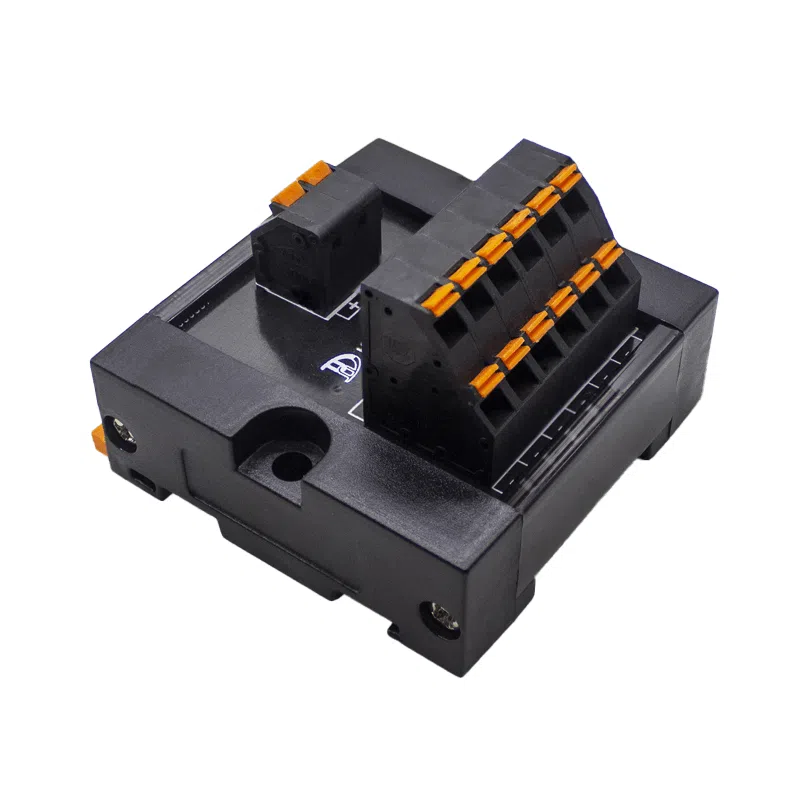
Model Number: HM02-06M
- Plastic material: PA66 UL94V-0
- Size (L*W*Hmm): 55*55*42mm
- Certification: UL,CE,ROSH,CQC,TUV
- Wire range: Can be 24-12AWG
- Max soldering: -40℃~±105℃/5Sec
Part 4 How to Choose the Right DIN Rail Junction Box for Your Automation Needs
Factors to consider
Selecting the ideal product requires careful consideration of four key factors. First, evaluate size requirements based on component quantity and future expansion needs. Second, choose durable materials like flame-retardant polycarbonate for harsh environments. Third, verify mounting options (standard or compact DIN rail) to match your cabinet space. Finally, assess environmental conditions – including temperature, humidity, and vibration levels – to ensure long-term reliability.
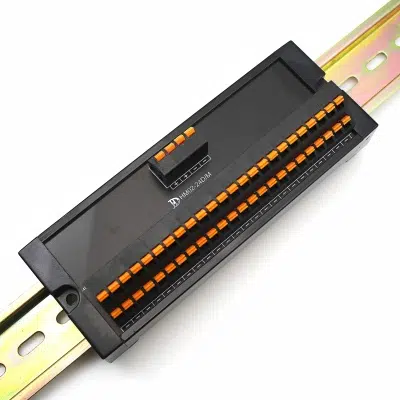
Common mistakes to avoid
Common selection mistakes include underestimating space needs (leading to overcrowded wiring), ignoring IP ratings for dust/moisture protection, and choosing non-standard sizes that complicate maintenance. Always prioritize certified products with proper safety markings to avoid compliance issues in industrial settings.
Conclusion
DIN rail junction box is essential for modern automation systems, delivering organized wiring, robust protection, and scalable connectivity. By centralizing electrical connections in control panels and machinery, they significantly improve system efficiency while reducing maintenance downtime. Their durable construction ensures reliable operation in demanding industrial environments and extending equipment lifespan.
For optimal performance, always select certified junction boxes that meet your specific application requirements. Ready to upgrade your automation setup? Consult with our experts today to find the ideal DIN rail solution for your needs.

